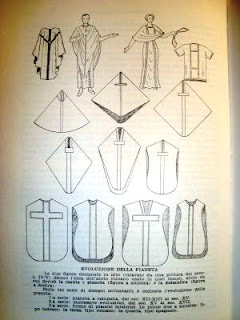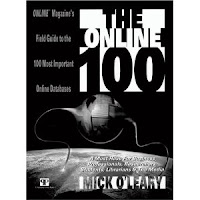In Jeffrey Tucker’s eloquent article about identifying the priorities of the reformed liturgy he acknowledges an undisputed truth concerning the principal instrument required for fit praise to God at worship:
Liturgical music is produced by the human voice alone, and we need to embrace liturgical prose rather than someone else’s poetry as the core substance of what we sing. We are about as far apart from this ideal as we’ve ever been, and a major part of the reason is that we no longer believe in our ability to sing anything at all. Forget style and text for a moment and just think about singing in general.
Allow me to caricature that statement with no malevolent intent at all. Jeffrey builds at hat rack with one exact length of peg upon which to hang a specific, ideal hat: liturgical prose. This project “works” in concept quite efficiently, except that while he fabricated his rack, other concepts skulked around, however they were not about the efficiency of the rack, but the nature of hats, that is to say the function and fashion of the hats. Hats representing, of course, singing.
“No one wants to hear me sing!”….Can we somehow arrange to ban those words from the human language? I wonder if this is darn-near universal that people claim that their voices are awful. People are telling themselves that they cannot do something that they can do. If every one of this people were at a party where “Happy Birthday” was being sung, they would all join in (without music, I might add!) and sing the pitches and the text with gusto. That’s singing, isn’t it?
As much as Jeffrey’s kind gesture to the flight attendant makes sense, I think he stretched her reaction into the first of a series of propositions to advance a theory: we are no longer a singing society. At first blush, I didn’t buy his theory on general principle. I mean, using a constant pitched hum to quiet a noisy classroom of choir students, or chanting “Dominus vobiscum” in a crowded nave full of First Communion parents chatting at full bore to the ceiling with the intent, again, to A. quite them; B. focus them; C. remind them they’re in a darned church for cryin’ out loud, well that makes sense. But to suggest that the sky cap, the taxi driver, the secretary and gardener could make this world a better place by breaking out their inner opera singer in the workplace, and then taking their sensible reactions as proof that we no longer sing? The theory’s erroneous. We should have just stuck with the function of the one hat we wish to hang on the one hat rack.
To be sure, these people don’t sound like American Idol, and that’s probably good insofar as Church music is concerned.
Let’s just press “pause” at “American Idol.” Consider that a decade and a half ago who would have imagined that a gargantuan industry would have been founded upon the mere idea that people by the gazillions would weekly tune into a show designed to capitalize on the Warhol principle that there are contenders for genuine stardom in the world of SINGING everywhere in the hinterlands? In point of fact, it almost proves that singers can be found under every rock in the countrysides. To further make my point, I can name this phenomenon in one note: karaoke. (Just think, we once thought “karaoke” was some little cultural oddity happening in Japanese cocktail lounges. Now you can’t walk down Main Street that is bereft of a KARAOKE BAR.) And to belabor my point, how many little burgs everywhere have their own provincial “Deadwood’s Idol” variety extravaganzas?
Oh say can we sing? You betcha, Margie, by the footlights’ early light.
I can’t resist going further, sorry. What also has always been part of the singing culture since time immemorial in America, or at least before Lowell Mason? Choral singing, of course. Like it’s closest academic, co-curricular cousin, team sports, the art form thrives stronger than ever. In my neck of the woods, a mini Bible Belt, no one raises an eyebrow if any of our middle or high school choruses sings repeated sacred songs, In Latin or Hebrew even, in a manner that would make Capella Sixtina red with envy. Put this reality in a petrie dish with singing “reality shows” and you get “GLEE” or better yet, “THE SING OFF.”
Why are people so alarmed by the prospect of singing?
What confounds the issues surrounding the “prospect of singing” isn’t we cannot sing; “Oh, no one wants to hear me sing!” The principle issue is “why would we sing?”
It is not something we make on our own. That leads us to believe that singing is only for the stars and the professionals, people who inspire the awe of large audiences.
But I believe I’ve just illustrated, if not proven, that a great multitude of “us” believe we can be stars, we can be professionals, we can inspire awe in large audiences at the local high school musical!
Jeffrey’s article then lists many scenarios present in affecting the fulcrum of “FACP” (Full, active, conscious participation, or lack thereof.) But those scenarios show only the “effect” of cause and effect at play in those situations.
Let me illustrate why the one hat rack, one type of hat theory cannot serve as a remedy for unwillingness to communal singing. Yesterday afternoon our parish had one of the two annual “Annointing Masses” in the late afternoon. Attendance was at an all time high, near as I could tell.
We chanted the English Introit from Bruce Ford’s TAG as a simple prelude. The congregation, filled with seriously ill, elderly and otherwise infirm people and their caregivers, then rose and belted out that most heretical bane of our Catholic gestalt, “Amazing Grace.” (Don’t go there right now, if you can avoid it please.) The celebrant then cantillated the “In Nomine.” AMEN! They sang. “The Lord be with you.” “AND ALSO WITH YOU!” And so it went throughout the next hour or so. So much so, that our little trio schola (my organist, wife and myself) could gently fold in harmonies to the full throated singing of the congregants, all the way to the final “In Nomine.”
Let me add to this that we have, at our place, gone completely “unplugged” for Lent for both our schola and even our ensemble. It has, as Jeffrey suggests, been a complete revelation and boon. We may never go back to any amplification without a tactical or strategic need. For true chant and choral music it’s perfection. For congregational singing, it also provides a clearer sense of balance between the organ and singers, etc.
The balance of Jeffrey’s article seems to regain its foothold, the hat rack stands tall and the hats fit nicely, “all things being equal.”
But, it is my experience that American catholic worshippers who come to Mass with intent beyond their individual and privatized notions of what constitutes their obligation to “hear Mass sung,” they will respond accordingly and well. I think this reality can be seen at daily Masses more regularly at Sunday Masses. These are intentional communities at worship. This can be seen on Thanksgiving Day Masses. People who take an hour plus to really offer up Eucharist while the bird is basted and roasting, are vibrating in tune to a higher frequency than the casually minded, casually clothed bunch who are thinking about brunch during the Sunday consecrations. The faithful who come to the Mass of the Lord’s Supper and Mandatum on Holy Thursday, don’t stop chanting “Pange lingua” even if they’re weeping at the “funeral procession” of the sacrificed Lord to the altar of repose. They are purposefully engaged.
I think it would be safe to say that if you’re still reading this, you would count yourself among the perpetually, purposefully engaged. But insofar as being exemplars, enablers or enthusiasts of the singing parishioner, we can only do our calling and tasks to the best of our abilities, and continue to hone our understanding, our will, our humility and our patience that the other aspects and ministers serving the Mass, which we sing (and not sing “at”) will inspire our faithful believers to not even think, when they are blessed with “The Lord be with you,” ….”Oh, no one wants to hear me sing.” Oh yes, there’s at least some One. We call Him Lord.
This response is not meant to contend with Jeffrey’s thrust of prioritization within the reformation of worship practices. In fact, I rather think my observation argues for the efficiency of Dr. Mahrt’s “paradigm” that which is at the center of the orbiting “all things being in equal measure, according to their roles.”










